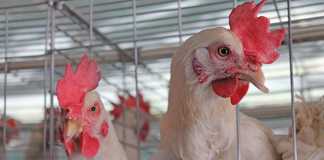Rising electricity prices mean that renewable energy installations make a great deal of financial sense. The payback period in energy cost savings has decreased from about eight years to about five years. The already tight margins in agriculture will be further squeezed if the National Energy Regulator of SA grants Eskom’s request to hike tariffs by 16% per annum for the next five years.
Eskom says it needs 13% of the increase for its own development and 3% to support the entry of new independent power producers. The average electricity price would increase from the current 61c/kWh to 96c/ kWh by 2017/2018. Eskom’s average selling price has already increased by almost 300% from 2008 to date, from 19,4c/unit to 61c/unit.
Peter Haylett, chairperson of the Cape Chamber of Commerce and Industry’s industrial focus portfolio committee, said business could not keep on carrying these costs. “These increases are way above inflation. We have reached the level where we are going to start to see investment in renewable energy. More and more people are bailing out of Eskom and finding alternative power sources that were previously considered expensive.”
Villiera Wines of Stellenbosch has invested in solar energy and Vodacom’s head office in Cape Town has a 500 kilowatt peak (kWp) installation. “Their prediction is that they will be off the grid by the end of the year,” said Haylett.
Villiera’s investment
In 2010, alternative energy provider enerGworx installed a 132kWp solar powered system at Villiera, consisting of 539 solar modules across three of the cellar’s roofs. It is one of the biggest roof-mounted solar installations in SA. Villiera Wines’ director, Simon Grier is the driving force behind Villiera’s sustainable practices. “We put it up to make a statement but it has become a sustainable investment that will pay for itself in just under eight years,” said Grier.
The Villiera solar plant produces around 726kWh/ day or 240 000kWh/year; enough to power the winery’s off-season daytime requirements, providing electricity to staff housing, offices, kitchens, processing and bottling facilities, cellars and cooling and irrigation systems. Villiera uses a mix of renewable energy to displace Eskom power: from solar geysers to a small hydro-electric system and a battery system which stores solar power.
It has spent a lot of time, effort and money on using less power. “We have examined equipment efficiencies, installed smaller air compressors where possible, looked at more efficient cooling and insulation methods, replaced light bulbs with LED lights and switched off equipment, like cold stores, in winter. Three of Villiera’s farm vehicles are electric,” said Grier.
Villiera schedules peak power consumption to take advantage of cheaper Eskom rates. “We run cooling equipment on solar power in the day and switch over to Eskom at night when it is cheaper. Every month we try to come up with a money-saving idea that is socially acceptable and will mitigate our impact on the environment. We need to question everything we have done in the past.”
At least 500 visitors have viewed Villiera’s pioneering solar installation during the past two years. Grier said that, provided would-be users hired a reputable company, there was no questioning the value of this investment. “Once it is installed, there are no input costs which, for a farmer, is almost like magic.”
Lower costs
Managing director of enerGworx André Potgieter said that renewable energy installations made financial sense with rising Eskom prices. “The payback period for installations has decreased from seven or eight years to four or five years, because the cost of installations – coupled with the current incentives – has come down dramatically and the price of electricity is higher.”
Prices have almost halved in three years, with larger installations costing in the region of R16 000/ kWp installed. “Our solar installations have a guaranteed performance of 25 years, and last 25 to 35 years, providing a good 20 years of free power.
“Not enough wineries are investing in alternative energy supply. Margins in the wine industry are under pressure with exports decreasing and increased input costs,” Potgieter said.
Dave Kruger, CEO of waste-to-energy company, South African Clean Energy (Sace), said investing in power was no longer just a question of sensible economic policy but one of ensuring reliability of supply. Sace is installing a 1,25MW biomass-to-energy plant for Bedrock Mining Support in Mpumalanga, in the White River area. Power will be generated from timber logging residue.
Sace plans to erect five 250kW gasifiers to generate 1,25MW of electricity. The power will be sold to private clients through a wheeling arrangement with Eskom. The project will cost R18 million, but Kruger said that with the Eskom rebate of 80c/kWh it should be paid off in four-and-a-half years.
“The modular approach is practical, as modules can be added should more feedstock become available. We have had numerous calls from farmers interested in the smaller 250kW biomass project. A group of neighbouring farmers with enough biomass to generate 250kW could install one 250kW unit with a centralised gasifier and connect their farms directly to the power supply,” said Kruger.
Other technologies such as photo voltaic (PV) solar and solar thermal energy in conjunction with coal boilers to heat floors in nurseries and poultry houses could be used. “South Africa is moving into the next phase of renewable energy supply and we are forced to look at alternatives. These are exciting times,” said Kruger.












